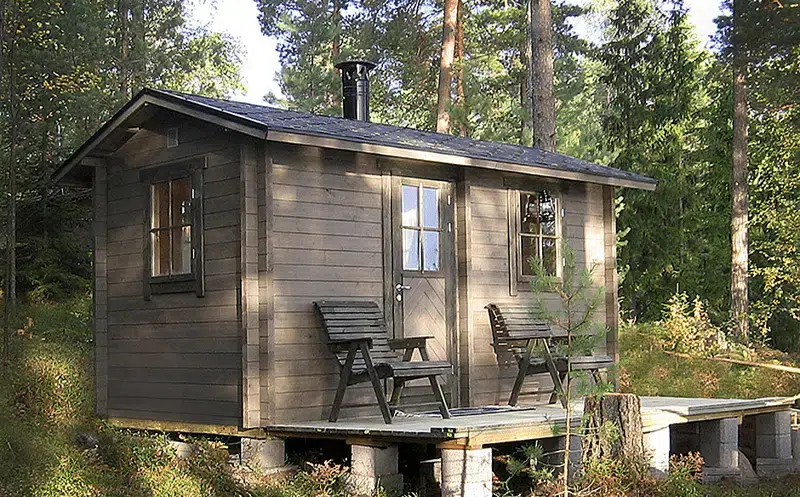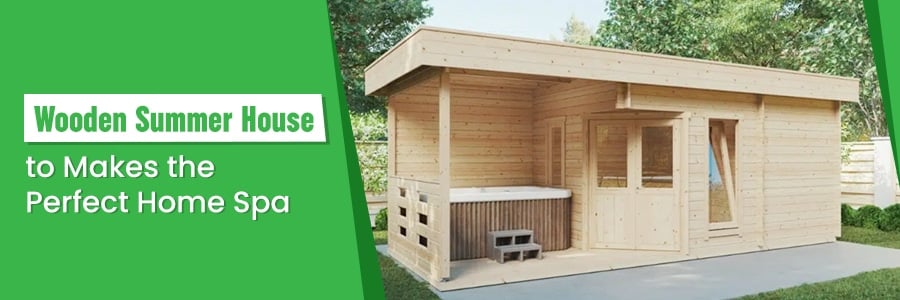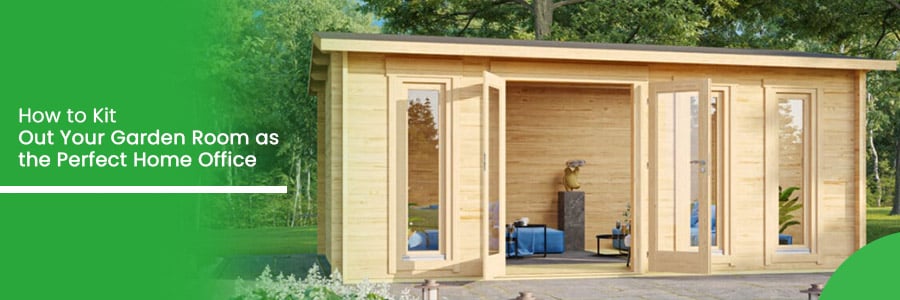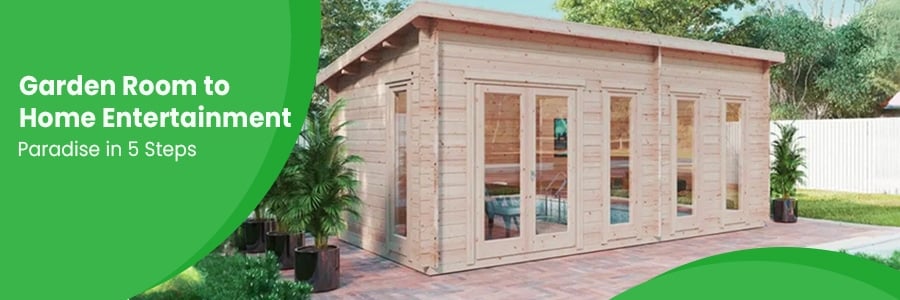How to Set up a Perfect Garden Office
29.10.2020
If you are currently working from home, then you already know how difficult this can be if you don’t have a dedicated space. Working at your kitchen table might seem like a viable solution at first. However, after a few months of mixing your domestic life with your professional one, you’ll surely conclude that you need to invest in a garden office. And that’s a great idea!
Setting up a great garden office is easier than it sounds. But first, let’s take a quick look at a few notable benefits of creating a workspace in your garden or back yard.
The Advantages of Investing in a Garden Office
Having a garden office comes with many advantages and few if any, disadvantages. You get to work in a private and comfortable space, you can change the environment once your workday is done, and you save a lot of time, money, and effort. And we’re not the only ones who think garden offices are awesome. According to a study conducted by Harvard T.H. Chan School of Public Health, people who work in green environments, such as log cabins, are much more productive than people who work in conventional environments.
Furthermore, a lot of artists such as authors, musicians, and painters admit that garden studios boost their creativity. There’s something about being isolated in a beautifully decorated space, surrounded by nature that makes them want to create and to work on their projects. Barbara Hepworth, Roald Dahl, Damien Hirst, Louise de Bernieres, Sylvia Antonsen, and John Harland are just a few examples of successful people who love spending time in their garden workspaces.
But you don’t have to be a famous author, sculptor, or musician to have a garden office; you just need to think outside the box when it comes to creating your own space. And that’s another advantage. You’ll get to decorate your office based on your needs and preferences.
Important Things to Consider When Creating a Garden Office
So you’ve decided to invest in a garden office or to transform your log cabin into a productive workspace. Now, it would be wise to consider a few important aspects. For instance, take some time to decide how you want to position your garden office. Would you prefer to work in a quiet corner or are you more of a center of attention kind of person? Or maybe you want to have plenty of natural light or to look out the window while you work. Think of the view that you’d like to have and what angle makes you feel safe and comfortable.
To be productive in your new space, you’ll need plenty of light, heat, electricity, and connectivity. While you can surely handle some of these utilities on your own, for some of them you might need to hire a qualified specialist. Keep in mind that small and medium-sized log cabins don’t usually require a building permit, but any electrical installation does, and in some countries, hiring a qualified electrician is mandatory.
Winter is approaching and the days are getting shorter, so you might want to consider installing an outdoor security light in addition to your interior lighting. If you wake up early, when it’s still a bit dark outside, and work late evenings, you’ll need to choose a few nice lamps.
Furniture is also important and according to interiors writer and blogger Jen, of Love Chic Living “a clever home office should be equipped with: good lighting, desktop storage, decent seating, noticeboard, shelving, and an ordered filing system.”
What Log Cabins and Garden Rooms Make the Best Home Office?
Choosing the best type of log cabin or garden room can seem like a daunting task. But if you take a look at our website, you’ll see that we have a dedicated section where you can find our most popular garden offices. We offer a wide range of products that fit any budget and any space. Whether you’re looking for a small affordable garden office or a luxurious one, you’ll surely find something to your liking.
A very popular choice amongst our clients is our Lucas E Contemporary Garden Log Cabin with Veranda. This garden room is extremely attractive, affordable, and it has a nice terrace where you can enjoy a cup of coffee with your clients. The terrace is protected by a wooden wall, which means that it is waterproof and private and the generous canopy will protect you from direct sun, wind, rain, or snow. If you want to use your garden office year-round, make sure you also order the floor and roof insulation kit. You can opt for professional installation and upgrade to premium folding doors if your budget allows.
How to Optimize Your Garden Office Space Planning
There are a few essential aspects that you need to consider when it comes to setting up your garden office layout:
Make sure you have enough space to move around and to be comfortable while working. If you work on your own, you should have plenty of room to move about, to lean back with your chair, to get up and stretch, and to upgrade to a bigger desk, when and if needed.
Invest in an ergonomic chair and a high-quality desk. By choosing a good chair you avoid back pain and many other health problems. As you know, spending too many hours in front of the computer can have a negative impact on your spine and only an ergonomic chair can prevent that from happening. But don’t forget to get up and stretch hourly.
Will you need a lot of storage space? If you are a freelancer, chances are the only storage space you’ll need is your computer. But, if your office work requires you to have storage space, add a few filing cabinets, wall shelves, or drawer units to your list of necessary purchases.
Additional Tips to Turn Your Log Cabin into a Perfect Garden Office:
Try to keep your office space as clean and as decluttered as possible. Studies have shown that working in a clean environment will improve your sense of health and well-being and will increase your productivity.
Choose a garden office that can be equipped with a small bathroom. This is essential if you plan on having client meetings in your home office.
To avoid screen glare, place your desk in against a window.
Decorate your office with low-maintenance plants like succulents, cacti, ferns, or ficus plants, with abstract paintings, and other visually attractive objects.
Categories:
BlogWant to discuss over phone. Let us call back to you
If you need any additional info regarding any product, please fill in the below form and we will get back to you, usually the same or next working day.
Have any questions regarding some product?
If you need any additional info regarding any product, please send us your questions.



